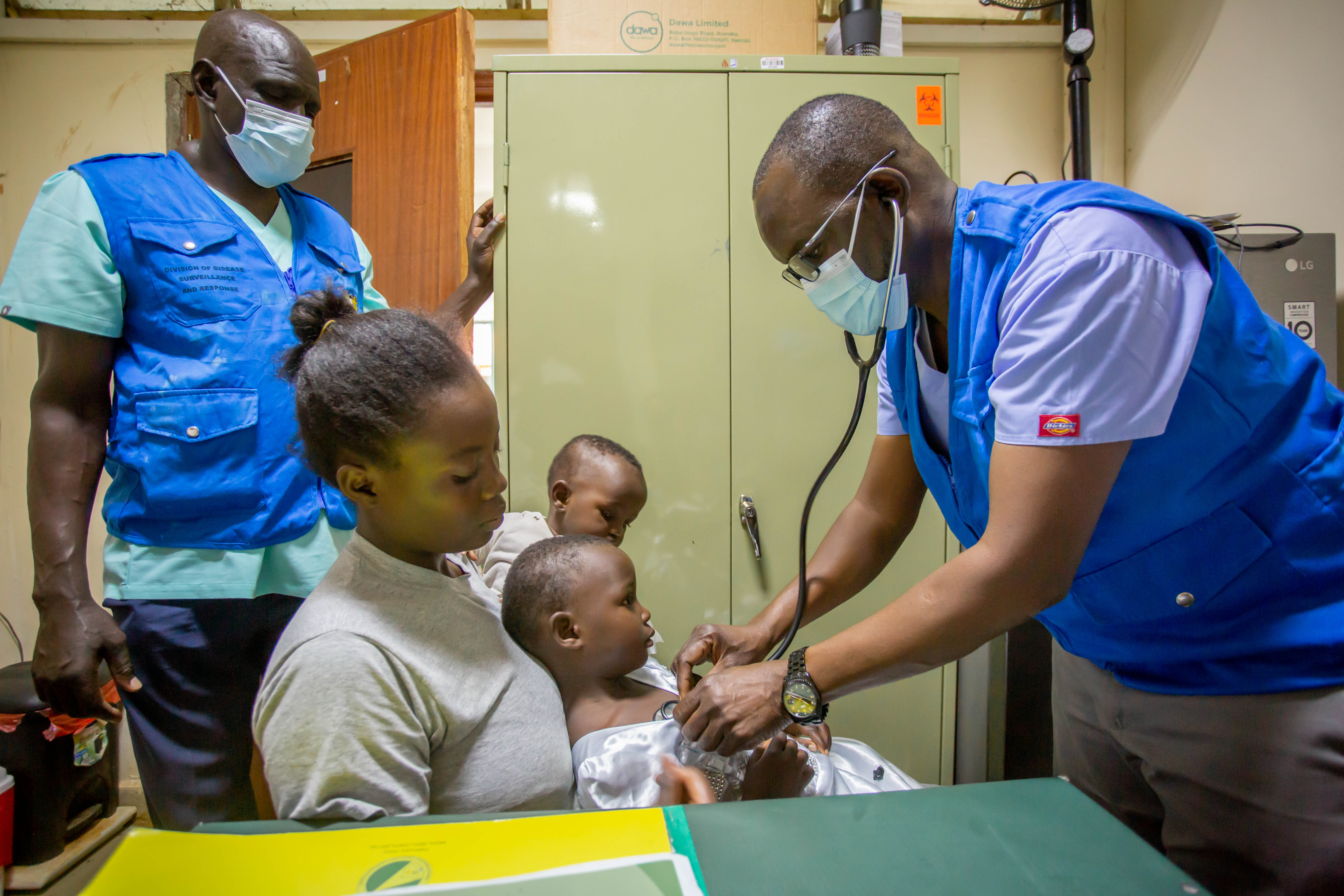May 29, 2025

A young girl with tired, feverish eyes waits in a small office in the Siaya County Referral Hospital in Kisumu, Kenya, with her mother and two siblings. Her ambiguous symptoms – fever, cough, fatigue – could be a common cold, or it could signal a more serious emerging public health threat.
James Owugo is the first step in determining where this little girl fits into the larger landscape of health and illness in the region. He screens patients for Influenza and other upper respiratory illness sentinel surveillance under the U.S. CDC program in collaboration with local partner, the Kenya Medical Research Institute (KEMRI) and Ministry of Health.
Early detection through sentinel surveillance sample collection is critical for timely intervention and disease control. HJFMRI supports surveillance efforts designed primarily to detect influenza, COVID and RSV.
Owugo collects samples from clinical sites throughout Siaya County for the program and sends swab samples to collaborating KEMRI labs for analysis and banking. By gathering data from diverse geographical and demographic groups, the research helps identify emerging health threats, track endemic diseases and understand transmission patterns. Sentinel sites serve as early warning systems, helping local health officials respond quickly to outbreaks and prevent larger epidemics. Beyond the region, data from Kenya’s surveillance is reported to the U.S. CDC and the WHO to fill in the global picture of global health patterns.
“Surveillance is an observation study; and it’s repetitive, doing the collection over time,” said Owugo. “We feel burnout at times, but we are happy because we are changing the lives of people and our communities, giving people a healthier and a safer environment.”
Disease surveillance can help inform diagnostic and countermeasure development, and it can also lead to improved targeting of interventions and more effective treatment for local populations. Owugo says samples contribute to data on the prevalence and incidence of rotavirus, pneumonia, malaria, HIV, COVID and other illnesses. One major focus is influenza. “We've been able to evaluate uptake of the influenza vaccine and realized that a major target population, the senior citizens 60 and above, was being missed,” said Owugo. “Now provider partners are doing outreach for this cohort.” On a larger scale, findings are informing national vaccine policies.
HJFMRI supports the surveillance sentinel and lab activities through agreements with the U.S. CDC in collaboration with Ministry of Health and KEMRI. The longstanding partnership advances science, international health collaboration and health system strengthening, ensuring Kenya and the surrounding region is better prepared to face the evolving landscape of infectious disease.